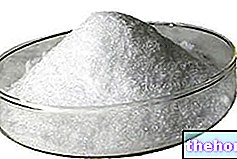See also: maltodextrin
Dextrins are a group of low-medium molecular weight carbohydrates, obtained from starch by acid, enzymatic or thermal hydrolysis. They are dextrotogenic and soluble in water, but not in alcohol.

In the human organism the digestion of dextrins is entrusted to a group of deramifying enzymes, called dextrinases or α-1,6 glycosidases, present in the epithelial cells of the small intestine.
Dextrins are more easily digestible than starch and are more easily digested the shorter the chain of glucose molecules that constitutes them. For this reason the bread crust, rich in dextrins formed by heating the starch, is more digestible than the crumb. In addition to being digested more easily, dextrins consisting of a few units of glucose are more soluble in water; on the other hand, there are some dextrins, called resistant, indigestible for man and used in the production of certain fiber supplements.
In addition to their molecular size, dextrins differ from each other in the type of starch from which they derive and in the process from which they were formed. In the industrial field they are used as glue for printing fabrics, as a thickener in the food sector, as an ingredient in dietetic products (especially for infants and for weaning) and as a granulating product in pharmaceutical ones. As anticipated, they are produced starting from starch, which can be rice, corn, potato (starch) or wheat. In the latter case, they may contain very small traces of gluten and as such cause some problems for those suffering from celiac disease. ; however, this is a rather remote possibility as dextrins are a highly transformed product, in which we find only small traces of amino acids.




























